Ozone Levels
2018-03-29 09:41:27.000 – Jillian Reynolds, Summit Intern
You may have heard about the current ozone levels in the news or in our forecasts. You may think “What is ozone”? or “What are they basing this level off of”? Well, I am here today to explain what the ozone is, what scale is used to determine what the ozone level is, and what you can do to limit your exposure when the ozone level is high.
What is the ozone? Ozone is a highly reactive gaseous molecule that consists of three oxygen atoms. Ozone occurs naturally in the upper atmosphere as it shields the earth from the sun’s ultraviolet (UV) rays. In the lower atmosphere (ground-level), ozone is formed primarily from chemical reactions of man-made air pollutants coming from vehicles, industries, power plants, and products such as solvents and paints (airnow.gov). Ozone levels and air pollution will often be worse during the afternoon hours in the summer due to its relation to UV radiation and sunlight. During the summertime, the days are longer, there is more sunlight, more UV radiation, and more stability in the atmosphere (latimes.com). These will lead to the air becoming stagnant; it will just sit in one spot and cook.
What scale is used to determine what the ozone level is? The Environmental Protective Agency (EPA) uses a scale called the Air Quality Index (AQI) that calculates five major air pollutants regulated by the Clean Air Act: ground-level ozone, particle pollution, carbon monoxide, sulfur dioxide, and nitrogen dioxide (airnow.gov). The AQI runs from 0 to 500. The higher the AQI value, the greater the level of air pollution and the greater the health concern is, especially for people with respiratory troubles.
Before you venture out and start your day, use this website to check what your current AQI is so you will know how to prepare: https://www.airnow.gov/.
Websites used:
Air Quality Guide for Ozone: https://airnow.gov/index.cfm?action=pubs.aqiguideozone.
Air pollution kicks into high gear in summer months: http://articles.latimes.com/2011/jun/01/health/la-he-summer-health-air-pollution-20110601.
Jillian Reynolds, Summit Intern
Supporter Spotlight: Ryan Shepard
Supporter Spotlight: Ryan Shepard By Ryan Shepard and Carissa Milliman Ever since I was a kid, living in Western New York and growing up with lake effect snow, I thought harsh weather was incredibly
Supporter Spotlight: Erik Rider
Supporter Spotlight: Erik Rider By Wendy Almeida For Erik Rider, supporting Mount Washington Observatory comes from a lifelong fascination with weather and how it shapes daily life. Growing up along the Massachusetts coast, he
An Autumn Above the Clouds on Mount Washington
An Autumn Above the Clouds on Mount Washington By Cassie Farnsworth I don’t know how many times in life you get to say “it was exactly what I hoped it would be,” but my


